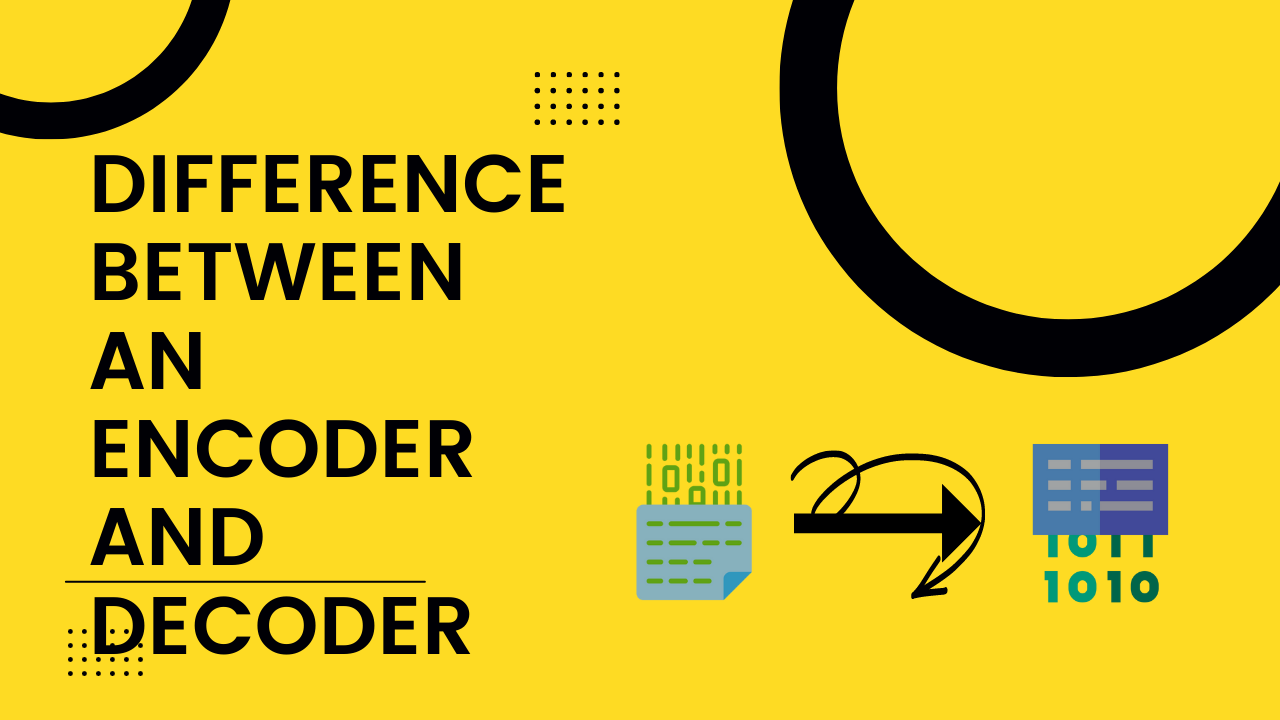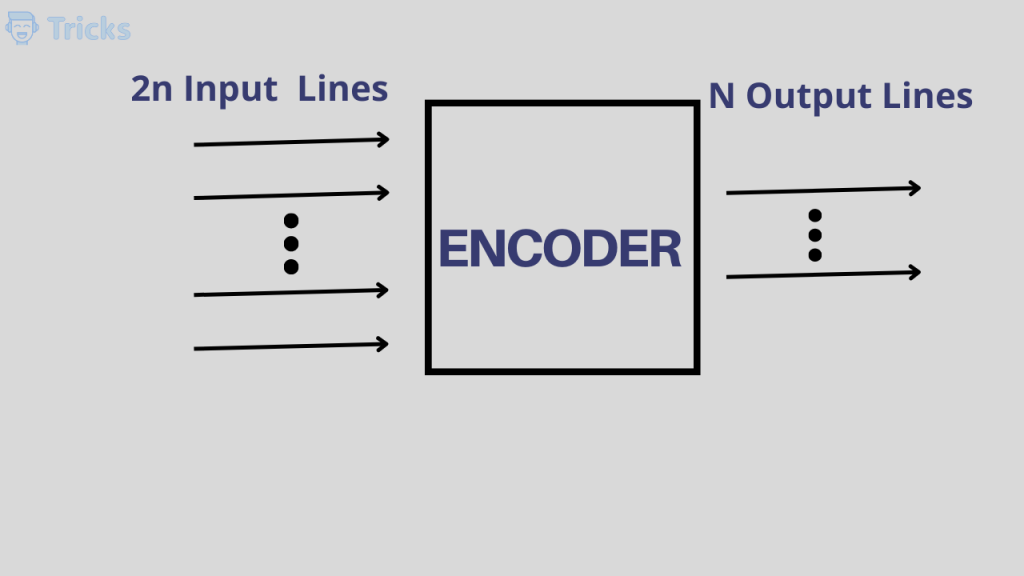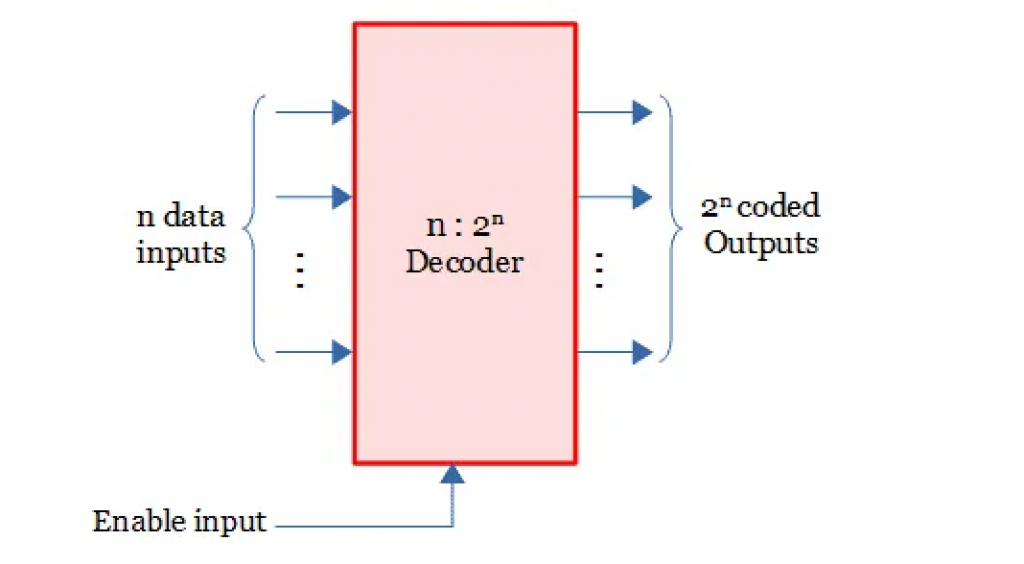
Encoder and Decoder are combinational logic circuits. What differentiates these two terminologies is that the encoder produces binary code as the output while the Decoder receives binary codes for inputs. Apart from this fundamental difference between an encoder and a decoder, we will be learning about how they work and their utilization in the coding world in this blog.
What is an Encoder?

An Encoder is a device that converts analog signals to digital signals, or it is a device that converts the active data signal into a coded message format. As mentioned above, it is a combinational circuit that converts binary information in the form of 2N input lines into N output lines representing N bit code for the input. A coded binary output is released when an input signal is applied to an encoder. The logic circuitry involved in it converts that particular input into an output.
An encoder is a mechanism that can change the information signal into a message that some control device can read. Or in other words, the combinational circuits that modify the binary code into N output lines are called Encoders.
The encoder circuit converts the applied information signal into a coded digital bit stream. A decoder performs the reverse operation and recovers the original information signal from the coded bits. In the case of the encoder, the applied signal is the active signal input. The Decoder accepts coded binary data as its input.
What is a Decoder?

A decoder is also a combinational circuit like an encoder, but its operation is the opposite of the encoders. A decoder is a device that gives the output as the original signal from the coded input data and converts N lines of input into 2N lines of output. An AND gate is a basic example and a decoding element that can be used as it produces a high output only when all inputs are high. The combinational circuits that convert the binary signal into 2N output lines are called Decoders.
Difference between Encoders and Decoders
| Parameter | Encoder | Decoder |
| Input applied | Original Message as a signal | Binary code as a signal |
| Output applied | Coded Binary Output | Original Message |
| Input Lines | 2N | N |
| Output Lines | N | 2N |
| Operation | Simple Tasks | Complex |
| Positioning | The encoder circuit is kept at the transmitting end. | The decoder circuit is kept on the receiving side. |
| Basic Logic Element | OR gate | AND gate along with NOT gate |
| Application | It is used in E-mail, video encoders, etc. | It is used in microprocessors, memory chips, etc. |
Applications of Encoder and Decoders
1. Applications and Uses of an Encoder
- It can be used for automatic health monitoring systems.
- Its use is found in RF-based home automation systems.
- It is also used in robotics vehicles with a metal detector.
- It is found in a war field flying robot using the night-vision flying camera.
- Encoders can be used for CNC machines.
- Encoders can be used in the medical industry and are the most common for breast cancer treatment worldwide.
- They are used in the speed synchronization of multiple motors in industries.
- Encoders can be used in the electronics industry.
2. Applications and Uses of Decoders
- It is used in code conversion. i.e. analog to digital conversion in the analog Decoder.
- It may also be used for data distribution.
- In a high-performance memory system, this decoding can be used to minimize the effect of system decoding.
- The Decoder is used as an address decoder in CPU memory location identification.
- CPU signal instructions are converted using encoders.
- They are mainly used in logical circuits and data transfer.
- They can also be used to create simple other digital logic like half adders and full addresses and some other digital designs also.
- Microprocessor selecting different I/O devices.
- It decodes to binary input to activate the LED segments so that the decimal number can be displayed.
- The microprocessor memory system selects different banks of memory.
- The Decoder can be used as a timing or sequencing signal to turn the device on or off at specific times because when the decoder inputs come from a counter that is being continually pulsed, The decoder output will be activated sequentially.
- The Decoder is used whenever an output or a group of output is activated only on the occurrence of a specific combination of input signals.
- They can be the application of switching functions with fewer integrated circuits.
So, what we do learn from this blog is that encoders and decoders work as synchronous counterparts. While one gives the output for valid input data, the other receives the output information and gives us back the original input data. Both find multiple uses and applications in the world of tech, electronics, and others that help us improve and work on various aspects of things.




